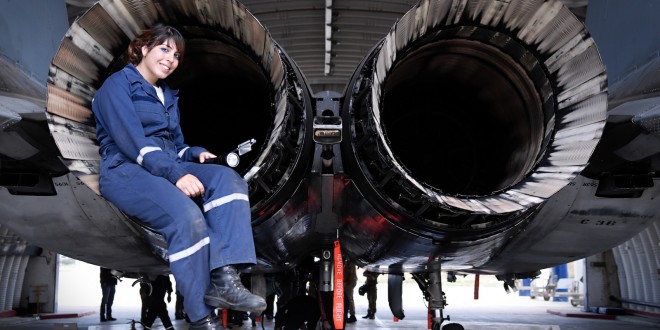Unlike a land or water based vehicle, an airplane has no means to halt mid air, nor land at any open field, should a snag occur. Keeping the airplane airworthy is of prime importance, recognized by the aviation regulator of each country, mandating checks in the interest of flight safety.
Checks, short for maintenance checks, are conducted at intervals specified by the aircraft manufacturer and approved by the regulator of the country where the airplane model is primarily designed and/or manufactured. Every airplane model has a different set of check intervals, depending on the nature of the airplane’s intended use, its construction, and the make/type of engine used. Every operator may propose a different set of check intervals, based on the aircraft manufacturer’s guidelines, which are approved by the country’s aviation authority.
Check intervals are based on events, calendar days, flight hours, or flight cycles, or a combination of these. Broadly, there are seven categories of checks for airplanes: Transit, Daily, Weekly, A check, B check, C check, and D check.
The daily and weekly checks are not dependant on the aircraft’s flight hours or flight cycles, while the A, B, C, and D checks, are dependent on the hours and cycles. The check is the lightest, and the D check is the most intensive “heavy maintenance” check, also referred to as a structural inspection (SI). The D-checks are very expensive, and an airplane usually sees only two or three D checks in its lifetime.
This piece will deal only with the checks an airplane undergoes, everyday.
Transit checks are more inspections than actual checks, and are conducted between flights (during a turnaround), on the apron. The check is for visible damage, leaks, missing parts, proper operating equipment and security of attachment. It may be performed by the flight crew, or a line maintenance crew, but any issues that need to be rectified must be performed by the maintenance crew only. Line rectifications, though rare, are responsible for flight delays, and flight cancellations in the event the issue cannot be immediately fixed, preventing the airplane from taking to the air.
The daily check, or service check, is performed after the last flight of the day and before the first flight the next day. This usually lasts for about 45 minutes per airplane, and a set of maintenance crew may have to inspect up to seven airplanes every night. The tasks involves the check of fire extinguishers (both in the cargo hold and engines), interior and exterior aircraft lights, cockpit annunciators, fault messages, exterior visual inspection for foreign object damage (FOD) and bird hits, hydraulic pumps for leakage, control surfaces, and wheels and tyres for wear. Part of the check is the downloading of the digital flight data recorder (DFDR), which gives a comprehensive time-stamped data log of every flight parameter, and every essential system that mandates monitoring. This DFDR data is sent to the flight safety department, where the data is analysed. Exceedences are detected, and the concerned flight crew are called for an enquiry if the exceedences are a concern and require justification.
During the check, if a problem is identified, the crew work on the aircraft to rectify the issue. Issues can also be identified by the flight crew, and reported via a maintenance log. If the issue is small, it is rectified overnight. If the issue cannot be rectified overnight, and the aircraft is required for operations, a minimum equipment list (MEL) comes in to play. A MEL is an approved list of the minimum equipment on the aircraft that must be working for it to perform a flight. For example, an aircraft can perform a non-functioning galley which is not critical to an aircraft safety. While an LCC may choose not to have a galley on its MEL, a full service carrier for whom food service is integral to the customer service experience may not want to operate an aircraft with a non-functional galley. An airplane can be released with a particular system inoperative, in accordance with the MEL, then the flight crew is informed of the inoperative system, such as thrust-reversers, or anti-collision lights or a food oven. If the inoperative system is major or part of the MEL, and cannot be fixed overnight, the aircraft is pulled out of service for the snag rectification, either by way of a repair, or a replacement of the damaged part.
A certificate of release (CRS) is signed an hour prior to the pilot receiving the aircraft for the first flight of the day. The CRS is maintained in the tech log (that remains in the cockpit), and specifies, if any, systems that are not usable, without which the flight can still be conducted safely, with certain precautions and procedures in place.
With newer materials and technologies comes the promise of greater reliabilities. For example Boeing has no transit or daily maintenance tasks for its 787 Dreamliner, allowing airlines to save on maintenance costs.
We will cover the A, B, C and D checks at a later date. Stay tuned.
As usual comments and feedback is welcome.
 Bangalore Aviation News, Reviews, Analysis and opinions of Indian Aviation
Bangalore Aviation News, Reviews, Analysis and opinions of Indian Aviation





Thanks for the very informative first article. Now AirIndia should report their daily usage of B787.
Very Informative article, thanks to Vasuki Prasad. Waiting for the next article.